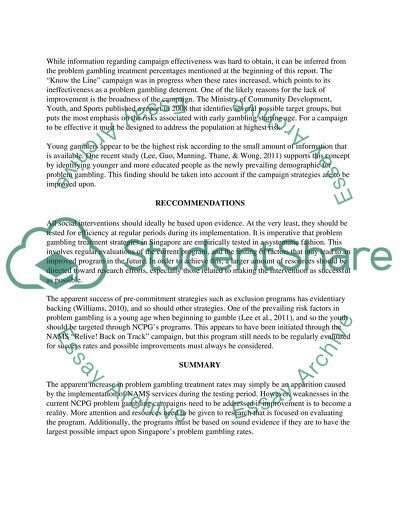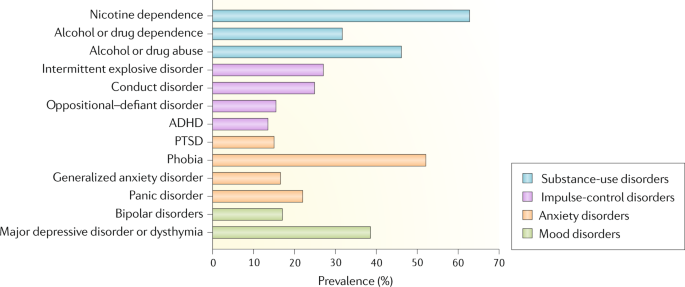Singapore Problem Gambling Statistics
- Singapore Problem Gambling Statistics Since
- Singapore Problem Gambling Statistics Worldwide
- Singapore Problem Gambling Statistics In America
Around 3.2 million Japanese have likely suffered from gambling addiction, a government survey shows, amid renewed concern about pathological gambling since a law to legalize casinos took effect last year.
Singapore Problem Gambling Statistics Since
An interim report on the survey, released Friday, said 3.6 percent of respondents were suspected of having developed gambling addiction at some point, a proportion that works out to around 3.2 million people nationwide.
It also said that 0.8 percent — equivalent to around 700,000 people — likely were addicted at some point in the past year, with the average age at 46.5. Among them, pachinko accounted for the most money spent on gambling, at an average of ¥58,000 per month. The survey of 10,000 adults received valid responses from 4,685. People between ages 20 and 74 were randomly selected for face-to-face interviews at 300 locations.
The expert who oversaw the survey, Susumu Higuchi, director of the National Hospital Organization Kurihama Medical and Addiction Center, said it would aid “not only the government but medical practitioners to work toward better treatment.”
Problem Gambling and Poverty A developing body of evidence suggests that problem gambling prevalence rates are higher in populations experiencing poverty when compared to the gen-eral population. The temporal order of poverty and problem gambling remains unclear although some research suggests problem gambling precedes pov-erty.
Impact of problem gambling on financial, emotional and social well-being of Singaporean families. International Gambling Studies: Vol. Statistics Singapore Newsletter Issue 2, 2020. PDF (1MB) Reference Statistical Best Practices 2020. Resources PDF (738KB) Reference eBook of Statistics.
The government is planning to open casinos in “integrated resorts” encompassing hotels, conference rooms, theaters and other entertainment facilities in the hope of boosting tourism and local economies.
A bill requiring the central and local governments to formulate concrete plans to combat addiction, such as setting up advice lines, was submitted by the ruling coalition to the House of Representatives in June but had to be scrapped when the Lower House was dissolved on Thursday.
While the survey organizer said the data for Japan could not be strictly compared with those from other countries due to differences in methodology, the report noted that the figures for suspected gambling addicts in 11 other countries and regions — including the United States, South Korea and Hong Kong — were lower, in the range of 0.2 to 2.4 percent.
As part of efforts to combat gambling addiction, the government decided recently to establish a system by the end of fiscal 2022 to limit online race betting. Currently, race betting is legally restricted to horse, powerboat, bicycle and motorcycle racing.
In a time of both misinformation and too much information, quality journalism is more crucial than ever.
By subscribing, you can help us get the story right.

Nowadays gambling has become even more popular than decades ago, owing to the development of Internet technologies. There are millions of gamblers all over the world. Most of the players, who parlay responsibly and don’t cross their safe bankroll limits, will have a great time.
Unfortunately for some people, it’s not just harmless entertainment. Sometimes it can lead to serious issues in different aspects of life. This might happen when a person starts experiencing addiction problems (a player is not capable of controlling his/her gambling behavior).
Problem Gambling Prevalence Rate
Some countries show a higher prevalence rate than others, and it may be explained by cultural, economic, political, and legal factors. We’ll provide thorough information about gambling addiction in different parts of the world, based on recent research from 2016.
Australia
Singapore Problem Gambling Statistics Worldwide
According to the statistics on problem gambling among the population, Australia shows quite high numbers. Approximately 0.5-1% (figures vary in different states) of citizens suffer from this addiction. This is so due to the changes in the betting industry due to digital technologies.
More people can now access betting entertainment via different online services, therefore the cases of unhealthy gambling have increased greatly. Each year Australians spend almost $1.5 billion on online wagering. Moreover, due to the high rate of illegal (in AU) sites, people are losing up to $0.5 billion to overseas companies.

That’s why Australia does everything to prevent unauthorized companies from entering their inner gaming market. According to the Gambling act 2001, with the recent amendment (2016), it is prohibited for foreign casino operators to provide their service there unless they are not licensed in AU.
Such strict rules also serve for decreasing the rate of dangerous betting habits.
Canada
Interestingly, Canada is among the countries with the highest percentage of gambling addicted citizens. Imagine that ¼ of all CA residents (or their friends/relatives) have suffered from some sort of bad consequences (job loss, depression, marriage problems and etc.) owing to their dependence.

And more than 80% of respondents have participated in lotteries during the past year.
It is a serious problem that affects millions of Canadians, although only half of those surveyed agreed that gambling can be dangerous.
New Zealand
New Zealand has the least number of problem gamblers according to the study by Business and Economic Research. It states that only a few citizens are liable to excessive betting behavior. Most of the casino clients in NZ are well aware of possible hazards, and know when it’s better to stop playing.
Norway
Despite the fact that there is government regulation of gambling activities, which provides various measures to decrease addiction problems among citizens, Norway is far away from the minimum rate of dependent people. Approximately 0.7% (more than in Denmark and UK) of the population in this country is grappling with the problem.

UK
Addiction drains a lot of money (about 1.2 billion pounds per year in the UK). Therefore, the government should pay special attention to this issue. According to various scientific sources, the cost also comprises special institutions service (mental health clinics), homelessness and police involvement.
The percentage of people who suffer from the bad influences of gambling varies from 0.6 to 1.1% of the total adult population. Diverse age groups show different liabilities to betting activities, which results in such data as 0.7% (for 25-34-year-olds), and 0.8% (for 18-24-year-olds). Moreover, the research also shows that unemployed, homeless, and people of color tend to be in the risk zone more often than others.
USA
The USA is in the top list of countries, where a huge part of the population (2.6% or almost 10 million people) has an addiction problem because of gambling. These activities are represented in every state (even where they are restricted).
Of course, not all players have serious dependences, some just like to have some fun and feel a little risk, while others learn to gamble on a professional level, which helps to avoid big losses.
Unfortunately for other types of people, such an entertainment can lead to an illness, that should be treated (due to the high similarity with drug and alcohol addiction).
Overall, compulsive betting behavior costs about 6 billion dollars per year for U.S. economics.

Distribution of Problem Players
Problem players have a different prevalence and it depends greatly on age and gender. These points are well-documented in the following paragraphs.
By Age
People are divided into age groups such as:
• 16-24 year olds – who show the most susceptibility (1.4%)
• 25-34 – tend to gamble less than their younger and older mates (0.8%)
• 35-44 – are also at a higher risk (1.1%)
• 45-55 and older – only 0.3% or less.
By Gender
The sharpest contrast we see is in the statistics that differentiate people by gender:
• Men – 1.2%
• Women – 0.1%.
Statistics of Device Usage
Singapore Problem Gambling Statistics In America
To understand the subject better, we will also provide statistics, which shows what devices are used mostly by problem gamblers:
• Laptops – 55%
• PCs – 34%
• Mobile phones/tablets – 29%/21%
It’s interesting to note, that mobile phones are used more commonly by 18-44-year-olds, while PCs are more popular among older people.